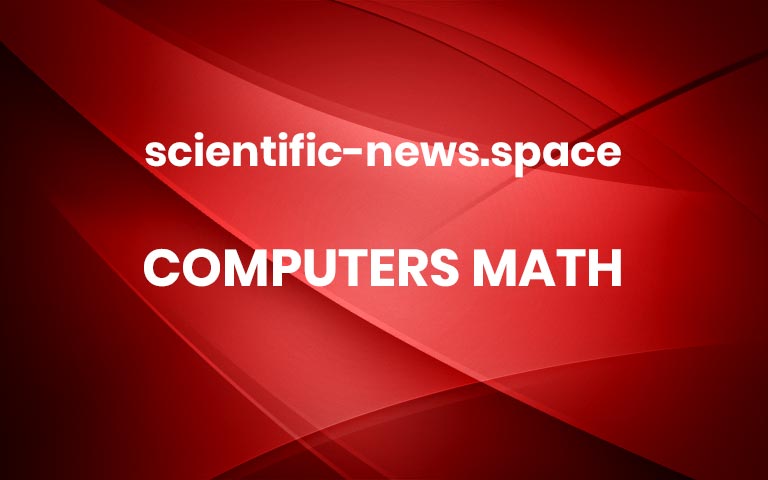Atom-thin tech replaces silicon in the world’s first 2D computer
UNIVERSITY PARK, Pa. — Silicon is king in the semiconductor technology that underpins smartphones, computers, electric vehicles and more, but its crown may be slipping according to a team led by researchers at Penn State. In a world first, they used two-dimensional (2D) materials, which are only an atom thick and retain their properties at that scale, unlike silicon, to develop a computer capable of simple operations.
The development, published today (June 11) in Nature, represents a major leap toward the realization of thinner, faster and more energy-efficient electronics, the researchers said. They created a complementary metal-oxide semiconductor (CMOS) computer — technology at the heart of nearly every modern electronic device — without relying on silicon. Instead, they used two different 2D materials to develop both types of transistors needed to control the electric current flow in CMOS computers: molybdenum disulfide for n-type transistors and tungsten diselenide for p-type transistors.
“Silicon has driven remarkable advances in electronics for decades by enabling continuous miniaturization of field-effect transistors (FETs),” said Saptarshi Das, the Ackley Professor of Engineering and professor of engineering science and mechanics at Penn State, who led the research. FETs control current flow using an electric field, which is produced when a voltage is applied. “However, as silicon devices shrink, their performance begins to degrade. Two-dimensional materials, by contrast, maintain their exceptional electronic properties at atomic thickness, offering a promising path forward.”
Das explained that CMOS technology requires both n-type and p-type semiconductors working together to achieve high performance at low power consumption — a key challenge that has stymied efforts to move beyond silicon. Although previous studies demonstrated small circuits based on 2D materials, scaling to complex, functional computers had remained elusive, Das said.
“That’s the key advancement of our work,” Das said. “We have demonstrated, for the first time, a CMOS computer built entirely from 2D materials, combining large area grown molybdenum disulfide and tungsten diselenide transistors.”
The team used metal-organic chemical vapor deposition (MOCVD) — a fabrication process that involves vaporizing ingredients, forcing a chemical reaction and depositing the products onto a substrate — to grow large sheets of molybdenum disulfide and tungsten diselenide and fabricate over 1,000 of each type of transistor. By carefully tuning the device fabrication and post-processing steps, they were able to adjust the threshold voltages of both n- and p-type transistors, enabling the construction of fully functional CMOS logic circuits.
“Our 2D CMOS computer operates at low-supply voltages with minimal power consumption and can perform simple logic operations at frequencies up to 25 kilohertz,” said first author Subir Ghosh, a doctoral student pursuing a degree in engineering science and mechanics under Das’s mentorship.
Ghosh noted that the operating frequency is low compared to conventional silicon CMOS circuits, but their computer — known as a one instruction set computer — can still perform simple logic operations.
“We also developed a computational model, calibrated using experimental data and incorporating variations between devices, to project the performance of our 2D CMOS computer and benchmark it against state-of-the-art silicon technology,” Ghosh said. “Although there remains scope for further optimization, this work marks a significant milestone in harnessing 2D materials to advance the field of electronics.”
Das agreed, explaining that more work is needed to further develop the 2D CMOS computer approach for broad use, but also emphasizing that the field is moving quickly when compared to the development of silicon technology.
“Silicon technology has been under development for about 80 years, but research into 2D materials is relatively recent, only really arising around 2010,” Das said. “We expect that the development of 2D material computers is going to be a gradual process, too, but this is a leap forward compared to the trajectory of silicon.”
Ghosh and Das credited the 2D Crystal Consortium Materials Innovation Platform (2DCC-MIP) at Penn State with providing the facilities and tools needed to demonstrate their approach. Das is also affiliated with the Materials Research Institute, the 2DCC-MIP and the Departments of Electrical Engineering and of Materials Science and Engineering, all at Penn State. Other contributors from the Penn State Department of Engineering Science and Mechanics include graduate students Yikai Zheng, Najam U. Sakib, Harikrishnan Ravichandran, Yongwen Sun, Andrew L. Pannone, Muhtasim Ul Karim Sadaf and Samriddha Ray; and Yang Yang, assistant professor. Yang is also affiliated with the Materials Research Institute and the Ken and Mary Alice Lindquist Department of Nuclear Engineering at Penn State. Joan Redwing, director of the 2DCC-MIP and distinguished professor of materials science and engineering and of electrical engineering, and Chen Chen, assistant research professor, also co-authored the paper. Other contributors include Musaib Rafiq and Subham Sahay, Indian Institute of Technology; and Mrinmoy Goswami, Jadavpur University.
The U.S. National Science Foundation, the Army Research Office and the Office of Naval Research supported this work in part. More


